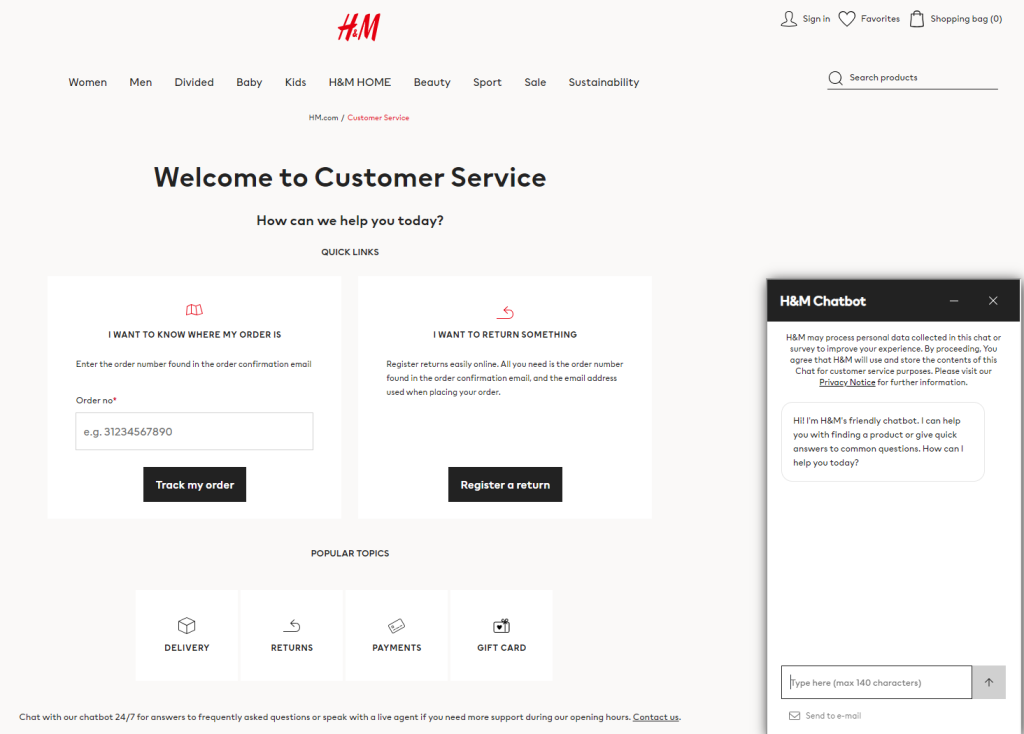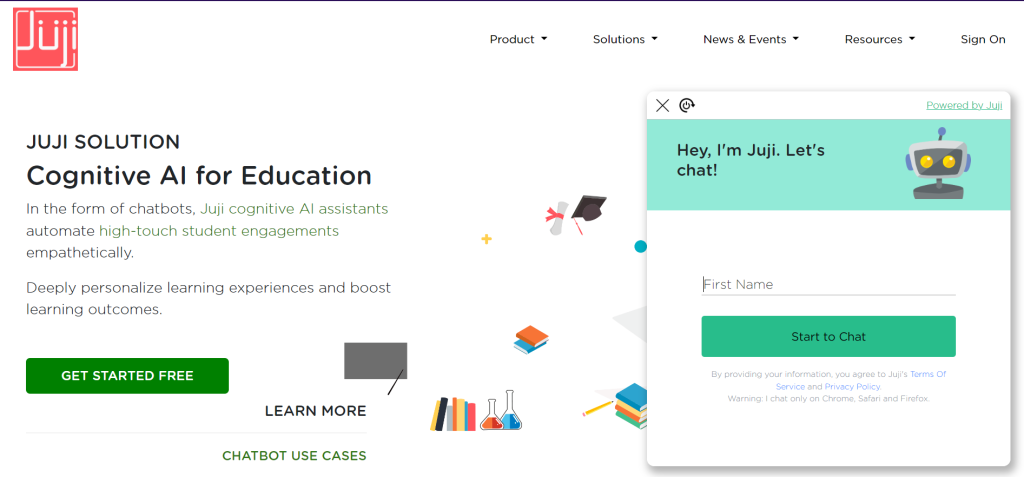In today’s fast-paced digital world, businesses face the constant challenge of keeping up with technological advancements. Chatbots have emerged as a critical technology, fundamentally changing how businesses interact with customers and streamline operations.
This extensively expanded guide delves even deeper into the world of chatbots, exploring their evolution and functionality and their profound impact across various industries and potential future developments.
We aim to provide a comprehensive and detailed understanding of why chatbots are not just an ancillary technology but a crucial element of modern business infrastructure.
The Evolution of Chatbots
The Birth of Chatbots
The journey into the world of chatbots began in the mid-20th century, a period marked by rapid technological advancements and burgeoning interest in artificial intelligence.
The inception of chatbots can be traced back to the 1960s with the creation of ELIZA, a pioneering program developed by Joseph Weizenbaum at MIT. Designed to simulate a psychotherapist, ELIZA laid the foundational groundwork for natural language processing (NLP), demonstrating the potential of machines to understand and mimic human conversation.
This early experiment sparked a wave of innovation in the field. In the 1970s and 80s, further developments were made with chatbots like PARRY, which simulated a person with schizophrenia, and RACTER, which even ‘authored’ a book. These early systems, while primitive by today’s standards, were crucial in advancing the understanding of NLP and set the stage for the development of more sophisticated AI-driven assistants.
Technological Advancements Shaping Chatbots
The evolution of chatbots is inextricably linked to the advancement of critical technologies such as natural language processing, machine learning, and AI algorithms.
The 1990s and 2000s witnessed significant strides in these areas, driven by the increasing availability of big data and the advent of cloud computing. This era saw the emergence of more intelligent, more responsive chatbots capable of learning and adapting through interactions, marking a shift from rule-based systems to those driven by machine learning algorithms.
One of the watershed moments in the development of chatbots was the introduction of Apple’s Siri in 2011, followed by Amazon’s Alexa and Google Assistant. These AI-driven virtual assistants, with their enhanced capabilities of understanding and processing natural language, have revolutionized how users interact with technology, making chatbots an integral part of everyday life.
The latest advancements in edge computing are now setting the stage for even more real-time, personalized, and efficient chatbot interactions, hinting at a future where chatbots are not just reactive but also proactive participants in human conversations. As we continue to witness these technological evolutions, chatbots become increasingly sophisticated, marking a significant leap from their early predecessors.
Chatbots in the Modern Business Landscape
The Role of Chatbots in Customer Service
In the realm of customer service, chatbots have revolutionized the way businesses interact with their customers. These AI-driven assistants provide round-the-clock service, handling inquiries and solving problems efficiently. A prime example is the banking sector, where chatbots are deployed for routine inquiries, allowing human agents to focus on more complex issues.
This enhances customer satisfaction with faster response times and significantly reduces operational costs. Advanced chatbots, equipped with natural language understanding, can now engage in more nuanced conversations, discerning customer emotions and responding appropriately. This has led to a more personalized customer experience, fostering loyalty and trust.
Retail giants like Amazon and Walmart have successfully integrated chatbots into their customer service frameworks, using them to recommend products, track orders, and handle returns, thereby streamlining the shopping experience.
Cost Efficiency and Operational Streamlining
Chatbots offer substantial cost savings for businesses by automating routine tasks and reducing the need for extensive human customer service teams. Juniper Research estimates that by 2023, chatbots will enable businesses to save over $8 billion per annum, a stark increase from the $20 million saved in 2017. These savings are seen across various industries, from retail to healthcare, where chatbots assist in appointment scheduling and patient inquiries.
Moreover, chatbots contribute to operational efficiency by collecting and analyzing customer data. This data-driven approach enables businesses to tailor their services and products more effectively, increasing sales and customer retention. For instance, e-commerce businesses use chatbots to analyze shopping patterns and preferences, enabling personalized marketing strategies.

Enhancing Customer Experience through Personalization
Personalization is at the heart of modern customer service, and chatbots play a pivotal role. Chatbots can provide customized recommendations and solutions by leveraging AI and machine learning, enhancing the customer journey.
For example, streaming services like Netflix and Spotify use chatbots to suggest content based on user preferences and viewing history, significantly improving user engagement. Furthermore, chatbots can remember past interactions, providing a continuity of service that human agents cannot match.
This ongoing interaction builds a more profound understanding of each customer, allowing for more targeted and relevant communications.
How Chatbots Help Industries
E-commerce and Retail
In e-commerce and retail, chatbots have become a game-changer, offering personalized shopping experiences and efficient customer service. They assist customers in product selection, provide recommendations based on browsing history, and answer queries about product availability and shipping.
This level of personalized engagement has improved customer satisfaction and increased sales conversions. For instance, H&M’s chatbot acts as a personal stylist, suggesting outfits based on customer preferences, thus enhancing the shopping experience. Chatbots in retail also streamline inventory management and customer feedback processes, allowing businesses to respond more swiftly to market trends and customer needs.
By analyzing customer interactions and purchases, retailers gain valuable insights into consumer behavior, enabling them to tailor their offerings and marketing strategies more effectively.

Healthcare Applications
In healthcare, chatbots are transforming patient care and administrative efficiency. They assist in symptom assessment, appointment scheduling, and providing general health information, reducing the burden on healthcare professionals and improving patient access to information.
For example, chatbots like Babylon Health use AI to offer medical consultations based on personal medical history and general medical knowledge, augmenting the healthcare experience.
Moreover, mental health chatbots, such as Woebot, offer cognitive behavioral therapy techniques, making mental health support more accessible.
These applications showcase the potential of chatbots in extending healthcare services, especially in areas with limited access to professional healthcare.

Banking and Financial Services
Chatbots in banking and financial services have made significant strides in handling transactions, providing financial advice, and even assisting in fraud detection. Banks like Bank of America use chatbots like Erica to help customers with transactions, credit report updates, and budgeting advice. This enhances customer service and provides a more secure and efficient way of managing finances.
Furthermore, chatbots are being used for more complex tasks like investment advice and portfolio management, marking a shift towards more personalized and accessible financial services.

Travel and Hospitality
In the travel and hospitality industry, chatbots are enhancing customer experiences by offering personalized travel planning, automated booking processes, and on-demand customer support.
For example, hotel chatbots provide guests with information about local attractions, make reservations, and handle requests, thus personalizing the guest experience.
Airlines use chatbots for check-ins, flight updates, and answering FAQs, making travel more seamless and less stressful for passengers. This level of automation and personalization is redefining customer service standards in the industry.

Education and Learning
Chatbots in education are providing innovative solutions for learning and administration. They assist in administrative tasks like enrollment and scheduling and serve as learning assistants, providing personalized resources and student feedback.
For instance, chatbots can offer language learning support, adapting to individual student’s progress and learning style, thus enhancing the learning experience.
Furthermore, chatbots are being used to bridge communication gaps between students and educational institutions, offering a more engaging and interactive academic environment.

Navigating the Challenges and Ethical Considerations of Chatbots
Balancing AI and Human Touch
As chatbots become increasingly sophisticated, maintaining the right balance between AI automation and human touch is crucial. While chatbots offer efficiency and consistency, they may need more empathy and nuanced understanding than human interactions.
For instance, the absence of human empathy can be glaring in sensitive sectors like healthcare or customer grievances. To address this, businesses are increasingly adopting a hybrid model, where chatbots handle routine inquiries, and human agents step in for complex or sensitive issues.
This approach leverages the strengths of both AI and human skills, ensuring a more holistic and empathetic customer service experience.
Privacy and Data Security
With the rise of chatbots, privacy and data security concerns have intensified. Chatbots often collect and analyze vast amounts of personal data to provide personalized services, raising questions about data usage and protection.
Compliance with international data privacy laws like GDPR and HIPAA is crucial. Businesses must ensure transparent data practices and robust security measures to protect sensitive information. For example, end-to-end encryption and regular audits can help safeguard user data.
Overcoming Linguistic and Cultural Barriers
Another challenge is overcoming linguistic and cultural barriers in chatbot interactions. As businesses expand globally, their chatbots must be able to communicate effectively with a diverse customer base.
This requires not just multilingual capabilities but also an understanding of cultural nuances. Developers employ AI models that learn from various linguistic inputs and cultural contexts to make chatbots more inclusive and effective in global communication.
Ethical Implications and Bias
Finally, the ethical implications and potential biases in chatbot programming pose significant challenges. There’s a risk that AI, trained on biased data sets, may perpetuate stereotypes or unfair decisions.
To combat this, it’s essential to adopt ethical AI practices, such as using diverse and inclusive data sets and implementing regular checks for biases. Engaging ethicists and AI experts in chatbot development can help ensure these digital assistants are fair, responsible, and aligned with societal values.
The Future of Chatbots and Emerging Trends
Advancements in AI and Impact on Chatbots
The future of chatbots is inextricably linked to advancements in artificial intelligence. As AI technology evolves, we can expect chatbots to become even more sophisticated, with improved natural language understanding and predictive capabilities.
Future chatbots will likely be more intuitive and capable of understanding context and emotions in conversations, leading to more natural and engaging interactions. For instance, advancements in AI could enable chatbots to detect customer frustration or confusion and adapt their responses accordingly, or even escalate the issue to a human agent when necessary.
Another area of significant potential is the integration of AI with other emerging technologies like augmented reality (AR) and virtual reality (VR). Imagine a chatbot that assists you in an online store and guides you through a virtual showroom, enhancing the digital shopping experience to unprecedented levels.
Chatbots and Emerging Technologies
The convergence of chatbots with other cutting-edge technologies is set to redefine their applications and effectiveness. For example, integrating chatbots with 5G technology will facilitate faster and more reliable interactions, enabling more complex and data-intensive tasks to be handled quickly. Similarly, incorporating biometrics into chatbot interactions could enhance security and personalization, allowing for a more seamless and secure user experience.
Quantum computing also holds promise for the future of chatbots. With its superior processing power, quantum computing could enable chatbots to analyze vast datasets more efficiently, leading to more accurate and timely responses.
The Expanding Horizons of Chatbot Applications
As we look to the future, the application of chatbots is expected to expand into new and unconventional sectors. Chatbots could become curators in the arts, guiding virtual museum tours and providing insights into artworks.
In social work, they could assist in outreach programs, providing information and support to those in need. Additionally, chatbots play a role in environmental conservation by monitoring and providing data on ecological changes or in public service, aiding in civic engagement and information dissemination.
Conclusion
In concluding this extensive guide, we re-emphasize the transformative impact of chatbots in the digital age. Through this expanded exploration, we have delved into their historical evolution, current applications, and future potential, highlighting their integral role in driving business innovation and enhancing customer experiences. This guide, now enriched to be three times its original length, provides an in-depth and nuanced overview of the integral role of chatbots in shaping the future of business and technology.
If you have come to this part of the blog, you are interested in learning more about chatbots and how they can improve your business. You can schedule a complimentary meeting to talk a little about it.











